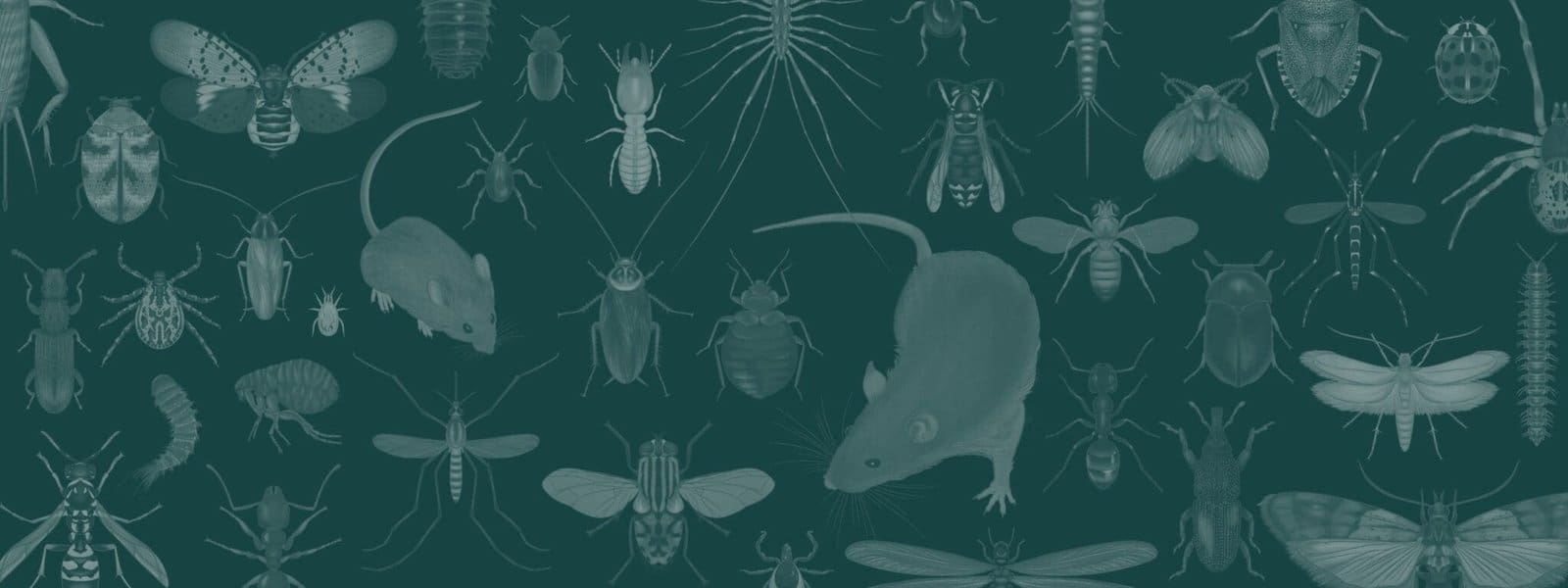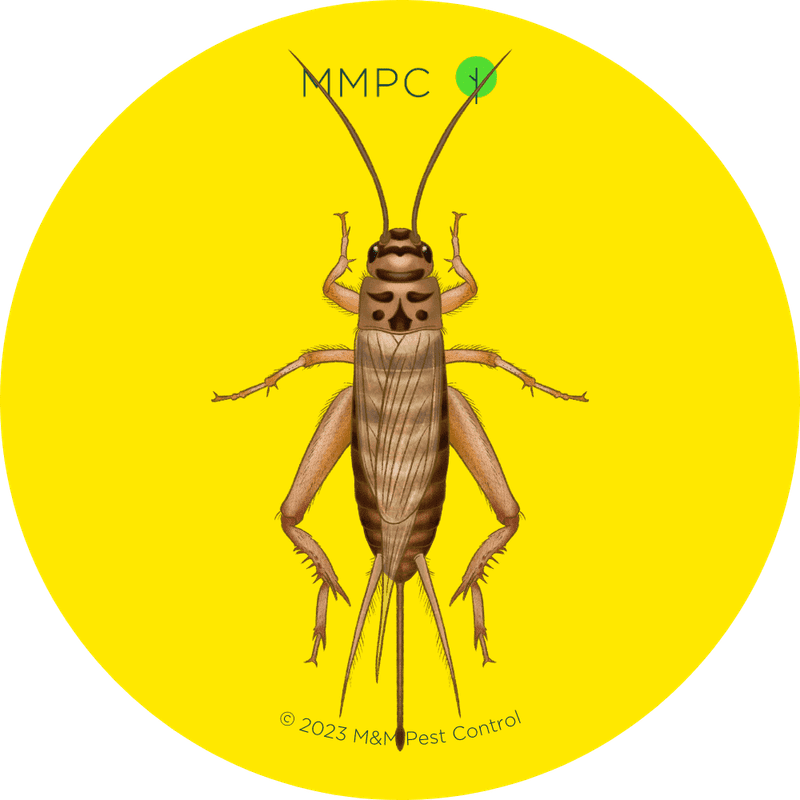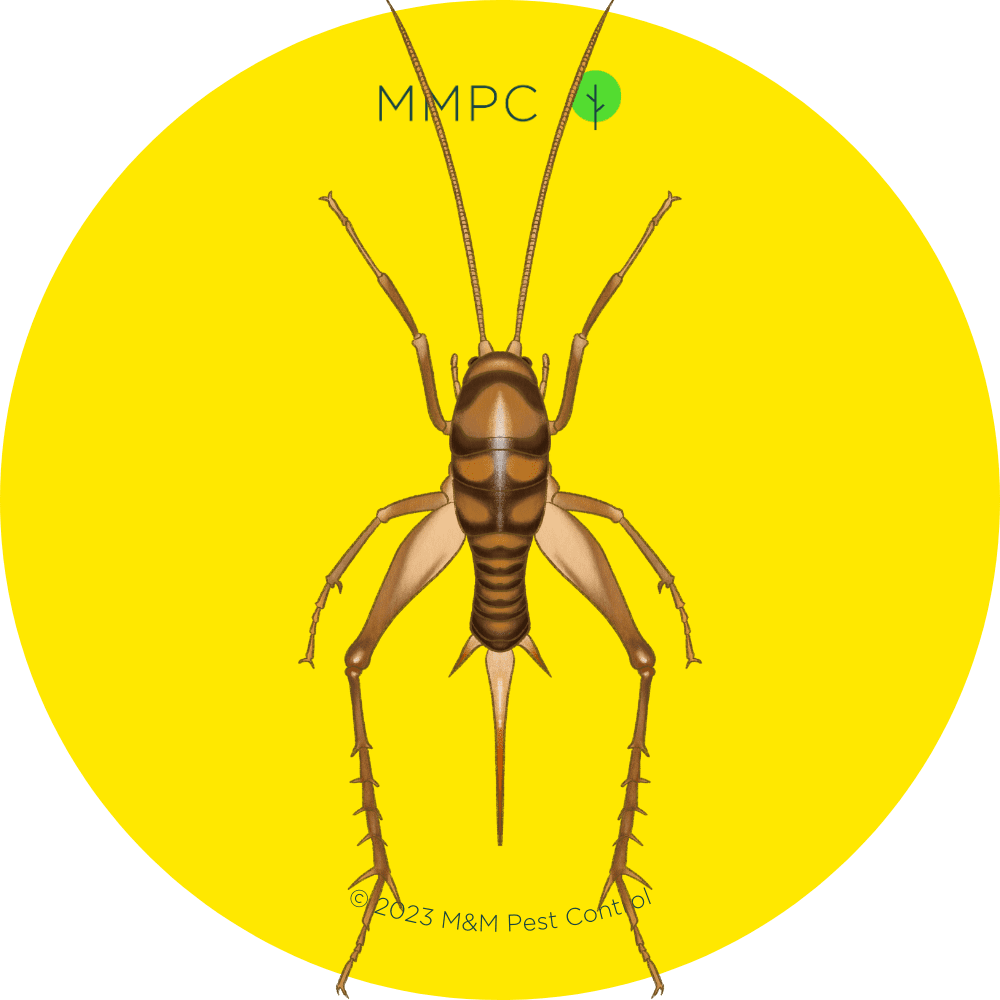
About Crickets
Crickets can be quite a nuisance when they get indoors, especially if their loud chirping at night disrupts sleep. While crickets don’t pose any direct harm to humans, they can cause damage to fabrics, paper products, and other materials in the home.

Pest Species in New York City / Tri-State Area:
House Cricket
Acheta domesticus
House crickets are most known for their loud, high-pitched chirping at night.
They’re attracted to light and warmth, and enter homes through open doors, windows, and other gaps. Once inside, they congregate in warm areas like kitchens, heaters, closets, and in upholstered furniture.
House crickets usually feed on fabrics, chewing holes and leaving stains (from their droppings) on clothes and furniture.

Size: 5/8″ – 7/8″ long (16 – 21 mm); about the size of a penny
Color: Pale, yellowish-brown with dark markings
Shape: Long, oval-shaped body with thread-like antennae, 6 legs (hind pair is extra long), and 2 pairs of wings
Identifying Features
- 6 legs (hind legs are extra long with enlarged femora)
- Thread-like (filiform) antennae
- 3 dark crossbands on the top of the head
- Long, oval-shaped body with a pair of long, outward-pointing appendages (cerci) extending from the rear
- Females have a long, sword-like appendage (ovipositor) extending from the rear
- 2 pairs of long, pointed wings
- Male crickets chirp by rubbing the edges of the forewings together
Spider Crickets / Camel Crickets
Rhaphidophoridae spp.
Unlike house crickets, spider crickets don’t chirp. They like dark, damp, and cool environments, and occasionally enter homes and buildings in search of shelter.
They’re mostly found in damp basements and areas with moisture or humidity issues, such as bathrooms and laundry rooms.
Spider crickets mainly feed on fungus, decaying plant and animal matter, and other insects. They sometimes also chew on stored paper and fabrics.

Size: 1/2″ – 1 1/2″ long (13 – 33 mm); up to the size of a paperclip
Color: Light-to-dark brown
Shape: Hump-backed, wingless body with thread-like antennae and 6 spider-like legs (hind pair is extra long)
Identifying Features
- 6 legs with light or dark-colored bands
- Knee joints pointed upwards like a spider
- Thread-like (filiform) antennae
- Hump-backed body with a mottled abdomen and a pair of long, outward-pointing appendages (cerci) extending from the rear
- Females have a long, sword-like appendage (ovipositor) extending from the rear
- Wingless and unable to chirp


